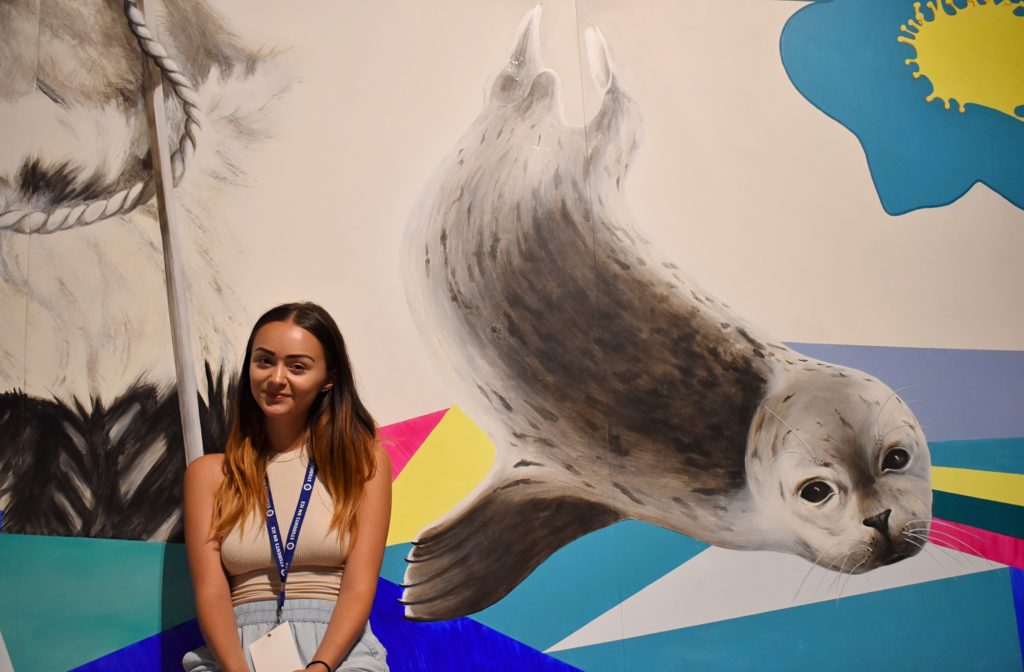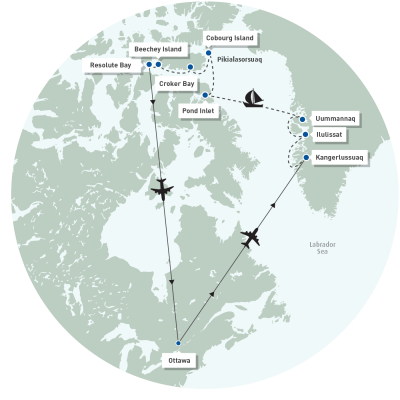This year’s Students on Ice expedition has set sail
Some 130 students from 18 countries are traveling to Greenland and the Canadian Arctic.

The 2019 Students on Ice expedition is underway.
From July 23 to August 7, 130 students from 18 countries — including 39 Inuit participants — are travelling through the Canadian Arctic and Greenland as part of the organization’s 2019 expedition.
“It truly is like a global village on this ship for two weeks,” said Shirley Manh, the expedition logistics and participants manager at Students on Ice.
Established in 2000, the charitable organization aims to educate youth about the polar regions by leading expeditions to Arctic and Antarctic areas. Students on Ice looks for youth who have a desire to learn and a desire to turn that learning into positive action.
For this year’s expedition, Students on Ice has a packed itinerary — with names like Greenland’s Kangerlussuaq, the Davis Strait Crossing, Pond Inlet, Sirmilik National Park and Grise Ford on the itinerary.

Lessons range from culture to history to science and much more. Sometimes, students are taught through lectures, seminars and Q&As. Other times, students get hands-on experience while going on hikes or wildlife observation trips.
“They’re in the water or in a pond, and on their hands and knees on the ground. And so those are super interactive,” said Manh.
Afterwards, students reflect on their lessons through journaling, music, visual art and other means.
“It’s such a privilege to get these little glimpses into the students’ lives because that’s what this experience so far has meant to that specific student, and then that one, and then that one. It’s really special,” said Manh.
The expedition’s “pod” system also helps students find a deeper meaning to their experiences. In groups of about 13, students get a chance to “dig a little deeper into the program” with each other’s help, said Manh.
“That’s how we create small communities on the expedition,” said Manh. “Altogether, we’re about 230 people. So it’s a large family, we want to make sure the students have a more intimate space to connect with each other, and create conversations and whatnot.”
A pre-expedition program called Saavittut is offered to Inuit participants. This year, it took place on July 21 and 22 at Nunavut Sivuniksavut in Ottawa.
Introduced three years ago, the program helps people with homesickness and the transition from north to south, since many students haven’t left their communities before. It also helps students “understand and engage with this idea of being an ambassador for the Arctic,” said Manh.
“It helps prepare the students to answer questions, and helps them prepare to share about their culture in a way that maybe they’ve never had to before.”
Emily Qitsualik, a 17-year-old student participant and Inuk from Ottawa, said the program reminded her to not be angry at someone’s ignorance. “I always like to say that because they don’t know and maybe they’re coming off as offensive by asking us something, and we have to remind ourselves that maybe they never heard of it before.”
Qitsualik became a participant because she loves sharing her culture and being a voice for urban Inuit in Ottawa. Having spoken at conferences before and growing up in the city, Qitsualik says she isn’t very shy, but knows that’s not always the case for a lot of Inuit who’ve grown up in smaller communities.
But, even with the experience of growing up in the south, Qitsualik still has to remind herself that not everyone understands her culture. “It’s like, oh yeah, they don’t know these things.”
“So [Saavittut is] preparing us for when we meet people. We have to explain ourselves to you, how do we do it?”
Meanwhile, students who have never been to the Arctic or haven’t interacted with Inuit culture get readings in advance. That way, students can get familiar some basic concepts or words before the trip.
And learning about different cultures isn’t restricted to those coming north for the first time, either.
“Truly, the magic happens when you put a student from a big city in the United States, along with an Inuit student from a small community in the Arctic, and you make them roommates,” said Manh.
“That’s when you break down those cultural barriers and they can teach each other.”